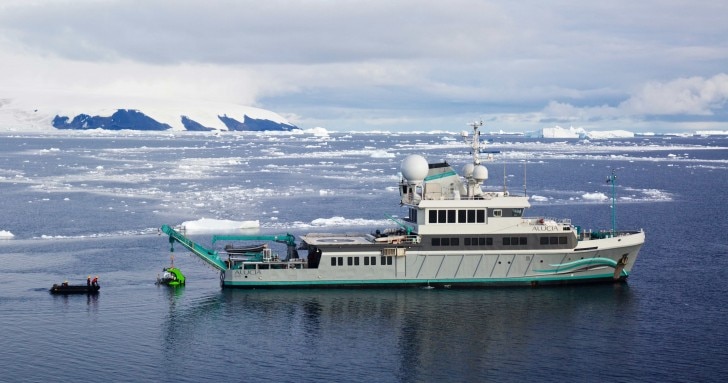BBC Earth newsletter
BBC Earth delivered direct to your inbox
Sign up to receive news, updates and exclusives from BBC Earth and related content from BBC Studios by email.
Blue Planet II
A submarine dive to 1000 metres under the Antarctic ice fields enabled the Blue Planet II team to record remarkable life for episode The Deep. No human had visited such depths of Antarctica before.
Two years in the making, this voyage into the unknown has not only led to a stunning sequence that plunges us into an alien world, rich in biomass and full of life, it has also opened up opportunities for scientific study.

The deep ocean is as challenging to explore as deep space; we have more detailed maps of the surface of Mars than the ocean floor. Journeying into this unexplored world gives us an insight into the creatures that thrive in such extreme conditions and offers scientists a unique view of life on the sea bed: vital for future conservation work to protect the sea bed.
It took two years to prepare for the expedition. A deep channel off the northern tip of the Antarctic Peninsula (ominously known as ‘Iceberg Alley’) was eventually selected for the dive. This presented its own challenges: the submersible had to dodge the shifting ice with some bergs the size of cars, others are the size of Hyde Park in London.

James Honeyborne, executive producer, describes the huge technical challenge of negotiating iceberg alley as being like a giant game of space invaders and no-one knew how the submersibles would cope under such stress.
Previously, remotely operated vehicles (ROVs) have visited the depths of the Antarctic Ocean with initial findings suggesting that an abundance of life can be found in the icy depths, rivaling even tropical coral reefs. This expedition certainly did not disappoint. The Blue Planet II crew discovered a seabed crammed with life, from ‘ice dragon’ fish to giant sea-spiders; Antarctic snail-fish and swimming feather stars.

Dr Jon Copley, associate professor at the University of Southampton, has been a driving force behind the expedition.
"Sending people a kilometre deep into the ocean around Antarctica for the first time shows that there is no longer any part of our blue planet that is inaccessible to us, if we can find the will to go there" says Copley.
"Unlike the harsh Antarctic conditions above the waves, the deep ocean here is a haven for life - thanks to almost 24-hour sunlight where we were diving, plankton bloom and krill feast on them, in turn ensuring plenty of food reaches the seafloor. The abundance of life down there is spectacular, with two-metre barrel sponges and giant sea-spiders with 40 cm leg spans. "
Unlike the harsh Antarctic conditions above the waves, the deep ocean here is a haven for life"

This abundance in life is due in part to a downward current that resembles underwater snow, silently falling. Nutrients at the surface are important for plankton but what really feeds the deep here is krill poo. Forming a rich soft mud on the seafloor.
Besides the abundance of marine invertebrates, the crew also filmed some remarkable species of fish that have also made this habitat home. Copley recalls a favourite sighting:
"One of my favourite fish that we saw was the "ice dragon", which has clear blood without any of the oxygen-carrying haemoglobin that gives ours its red colour. In the cold water, enough oxygen dissolves directly in the fluid of the fish's blood to keep it alive."

New data discovered on this expedition has implications on fishing policy in the Antarctic and Marine Protection Areas in the region. Copley says:
"On these dives, we watched the everyday lives of Antarctic deep-sea animals, helping us to understand them much better than studying specimens collected by nets or trawls from ships - and helping us to investigate how our own lives are connected to this remote yet fragile environment."
#OurBluePlanet is a collaboration between BBC Earth and Alucia Productions.
Featured image © BBC 2017